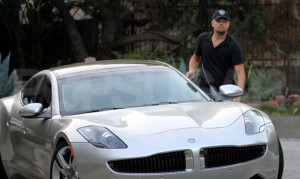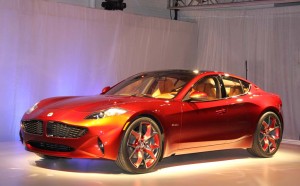
Fisker initially attracted the attention of a number of high-profile buyers, including actor Leonardo DiCaprio.
Bankrupt battery-carmaker Fisker Automotive could get a new lease on live. After an unexpected, last-minute surge in bidding, China’s Wanxiang Group won an auction for the remaining assets of the California-based maker for $149.2 million.
That was nearly six times as much as it originally appeared the once-promising Fisker might go for. The company originally expected its assets to go to Japan’s Hybrid Tech Holdings for a much more modest $25 million after filing for bankruptcy last November. Creditors had objected to what they saw as a sweetheart deal and U.S. Bankruptcy Judge Kevin Gross agreed to let other interested parties bid for Fisker’s remains.
“This is a great result for all Fisker stakeholders,” Marc Beilinson, the carmaker’s chief restructuring officer, said in a statement issued after the announcement – which is expected to be finalized by the Delaware-based bankruptcy court tomorrow.
The deal is particularly sweet for Wanxiang since it already owns the remains of the company that had supplied batteries to Fisker’s plug-in hybrid-electric vehicle, the Karma. After purchasing the bankrupt A123 last year, the Chinese company renamed it B456.
(Fourth fire renews concerns about Tesla Model S safety. Click Here for the latest.)
The question is what will Wanxiang now do with Fisker? It apparently is eyeing opportunities back in China. With its endemic air pollution problems, Chinese regulators have been pushing to expand the availability of battery-electric vehicles. In fact, a number of cities, including capital Beijing, exempt alternative-power vehicles from new restrictions on the number of new vehicles that can be registered each month.
But Wanxiang also is considering the possibility of re-launching the brand in the U.S. Along with auction loser Hybrid Tech, the Chinese firm told the bankruptcy judge it may move ahead with plans to produce Fisker vehicles at the old General Motors plant in Delaware the battery-car maker had purchased in 2010 for $20 million.
(Battery cars particularly hard-hit by cold weather. Click Here for the story.)
Fisker Automotive was found in Anaheim, California in 2007 by Henrik Fisker, a Danish designer best known for penning striking luxury models such as the Aston Martin DB9. The company quickly raised more than $1 billion in private equity and was also approved for a $529 million federal loan from a program designed to spur the development of alternative-power vehicles.
But after missing some key production targets, the Department of Energy froze that loan, Fisker only able to tap about $192 million. Things got worse when production of the Karma got off to a rocky start. The maker also faced a series of recalls and the loss of some plug-in hybrids during Hurricane Sandy. It was forced to halt development of a second, smaller model, and put on hold plans to re-open the GM plant in Delaare that was to produce the less-expensive Fisker Atlantic.
(Three-wheeled, 84 mpg Elio moves closer to production – but can it find buyers? Click Hereto find out.)
Last April, Fisker Automotive laid off almost its entire staff, eponymous founder Henrik Fisker severing ties with the company. It ultimately filed for bankruptcy on November 22nd, listing $500 million in assets but over $1 billion in debt.
Along with the design for the Karma and the still-incomplete Atlantic, as well as the Delaware plant, Wanxiang will take control of 18 Fisker patents for such things as its plug-in drivetrain technology. The firm had another 18 patent applications in process.

